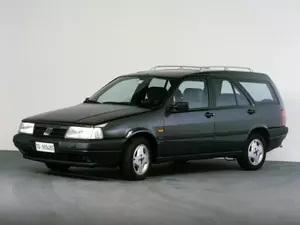
| Vehicle | Curb weight | Difference from world's smallest | Weight to power ratio | 0—60 mph acceleration ratio | Consumption ratio |
|---|---|---|---|---|---|
| 1.6 i.e. |
1111 kg / 2450 lbs |
686 kg (1513 lbs) heavier | 15 kg to 1 hp | 82 kg/s (181 lbs/s) |
142 kg/L (313 lbs/L) |
| 1.8 i.e. |
1222 kg / 2695 lbs |
797 kg (1758 lbs) heavier | 12 kg to 1 hp | 102 kg/s (225 lbs/s) |
137 kg/L (302 lbs/L) |
| 2.0 i.e. |
1252 kg / 2761 lbs |
827 kg (1824 lbs) heavier | 11 kg to 1 hp | 99 kg/s (218 lbs/s) |
130 kg/L (287 lbs/L) |
| 1.9 TD |
1242 kg / 2739 lbs |
817 kg (1802 lbs) heavier | 14 kg to 1 hp | 91 kg/s (201 lbs/s) |
204 kg/L (450 lbs/L) |
| 2.0 i.e. 4x4 |
1358 kg / 2994 lbs |
933 kg (2057 lbs) heavier | 12 kg to 1 hp | 110 kg/s (243 lbs/s) |
136 kg/L (300 lbs/L) |
| Vehicle | 1.6 i.e. |
|---|---|
| Curb weight |
1111 kg / 2450 lbs |
| Difference from world's smallest | 686 kg (686 lbs) heavier |
| Weight to power ratio | 15 kg to 1 hp |
| 0—60 mph acceleration ratio | 82 kg/s (181 lbs/s) |
| Consumption ratio |
142 kg/L (313 lbs/L) |
| Vehicle | 1.8 i.e. |
| Curb weight |
1222 kg / 2695 lbs |
| Difference from world's smallest | 797 kg (797 lbs) heavier |
| Weight to power ratio | 12 kg to 1 hp |
| 0—60 mph acceleration ratio | 102 kg/s (225 lbs/s) |
| Consumption ratio |
137 kg/L (302 lbs/L) |
| Vehicle | 2.0 i.e. |
| Curb weight |
1252 kg / 2761 lbs |
| Difference from world's smallest | 827 kg (827 lbs) heavier |
| Weight to power ratio | 11 kg to 1 hp |
| 0—60 mph acceleration ratio | 99 kg/s (218 lbs/s) |
| Consumption ratio |
130 kg/L (287 lbs/L) |
| Vehicle | 1.9 TD |
| Curb weight |
1242 kg / 2739 lbs |
| Difference from world's smallest | 817 kg (817 lbs) heavier |
| Weight to power ratio | 14 kg to 1 hp |
| 0—60 mph acceleration ratio | 91 kg/s (201 lbs/s) |
| Consumption ratio |
204 kg/L (450 lbs/L) |
| Vehicle | 2.0 i.e. 4x4 |
| Curb weight |
1358 kg / 2994 lbs |
| Difference from world's smallest | 933 kg (933 lbs) heavier |
| Weight to power ratio | 12 kg to 1 hp |
| 0—60 mph acceleration ratio | 110 kg/s (243 lbs/s) |
| Consumption ratio |
136 kg/L (300 lbs/L) |

| Vehicle | Curb weight | Difference from world's smallest | Weight to power ratio | 0—60 mph acceleration ratio | Consumption ratio |
|---|---|---|---|---|---|
| 1.4 |
1030 kg / 2271 lbs |
605 kg (1334 lbs) heavier | 13 kg to 1 hp | 81 kg/s (179 lbs/s) |
139 kg/L (306 lbs/L) |
| 1.4 i.e. |
1053 kg / 2322 lbs |
628 kg (1385 lbs) heavier | 15 kg to 1 hp | 77 kg/s (170 lbs/s) |
144 kg/L (318 lbs/L) |
| 1.6 |
1000 kg / 2205 lbs |
575 kg (1268 lbs) heavier | 12 kg to 1 hp | 89 kg/s (196 lbs/s) |
135 kg/L (298 lbs/L) |
| 1.6 i.e. |
1075 kg / 2370 lbs |
650 kg (1433 lbs) heavier | 14 kg to 1 hp | 82 kg/s (181 lbs/s) |
138 kg/L (304 lbs/L) |
| 1.8 i.e. |
1168 kg / 2575 lbs |
743 kg (1638 lbs) heavier | 12 kg to 1 hp | 98 kg/s (216 lbs/s) |
133 kg/L (293 lbs/L) |
| 1.9 D |
1130 kg / 2492 lbs |
705 kg (1555 lbs) heavier | 17 kg to 1 hp | 68 kg/s (150 lbs/s) |
179 kg/L (395 lbs/L) |
| 1.9 TD |
1188 kg / 2620 lbs |
763 kg (1683 lbs) heavier | 13 kg to 1 hp | 90 kg/s (198 lbs/s) |
195 kg/L (430 lbs/L) |
| 2.0 i.e. |
1198 kg / 2642 lbs |
773 kg (1705 lbs) heavier | 11 kg to 1 hp | 97 kg/s (214 lbs/s) |
126 kg/L (278 lbs/L) |
| Vehicle | 1.4 |
|---|---|
| Curb weight |
1030 kg / 2271 lbs |
| Difference from world's smallest | 605 kg (605 lbs) heavier |
| Weight to power ratio | 13 kg to 1 hp |
| 0—60 mph acceleration ratio | 81 kg/s (179 lbs/s) |
| Consumption ratio |
139 kg/L (306 lbs/L) |
| Vehicle | 1.4 i.e. |
| Curb weight |
1053 kg / 2322 lbs |
| Difference from world's smallest | 628 kg (628 lbs) heavier |
| Weight to power ratio | 15 kg to 1 hp |
| 0—60 mph acceleration ratio | 77 kg/s (170 lbs/s) |
| Consumption ratio |
144 kg/L (318 lbs/L) |
| Vehicle | 1.6 |
| Curb weight |
1000 kg / 2205 lbs |
| Difference from world's smallest | 575 kg (575 lbs) heavier |
| Weight to power ratio | 12 kg to 1 hp |
| 0—60 mph acceleration ratio | 89 kg/s (196 lbs/s) |
| Consumption ratio |
135 kg/L (298 lbs/L) |
| Vehicle | 1.6 i.e. |
| Curb weight |
1075 kg / 2370 lbs |
| Difference from world's smallest | 650 kg (650 lbs) heavier |
| Weight to power ratio | 14 kg to 1 hp |
| 0—60 mph acceleration ratio | 82 kg/s (181 lbs/s) |
| Consumption ratio |
138 kg/L (304 lbs/L) |
| Vehicle | 1.8 i.e. |
| Curb weight |
1168 kg / 2575 lbs |
| Difference from world's smallest | 743 kg (743 lbs) heavier |
| Weight to power ratio | 12 kg to 1 hp |
| 0—60 mph acceleration ratio | 98 kg/s (216 lbs/s) |
| Consumption ratio |
133 kg/L (293 lbs/L) |
| Vehicle | 1.9 D |
| Curb weight |
1130 kg / 2492 lbs |
| Difference from world's smallest | 705 kg (705 lbs) heavier |
| Weight to power ratio | 17 kg to 1 hp |
| 0—60 mph acceleration ratio | 68 kg/s (150 lbs/s) |
| Consumption ratio |
179 kg/L (395 lbs/L) |
| Vehicle | 1.9 TD |
| Curb weight |
1188 kg / 2620 lbs |
| Difference from world's smallest | 763 kg (763 lbs) heavier |
| Weight to power ratio | 13 kg to 1 hp |
| 0—60 mph acceleration ratio | 90 kg/s (198 lbs/s) |
| Consumption ratio |
195 kg/L (430 lbs/L) |
| Vehicle | 2.0 i.e. |
| Curb weight |
1198 kg / 2642 lbs |
| Difference from world's smallest | 773 kg (773 lbs) heavier |
| Weight to power ratio | 11 kg to 1 hp |
| 0—60 mph acceleration ratio | 97 kg/s (214 lbs/s) |
| Consumption ratio |
126 kg/L (278 lbs/L) |